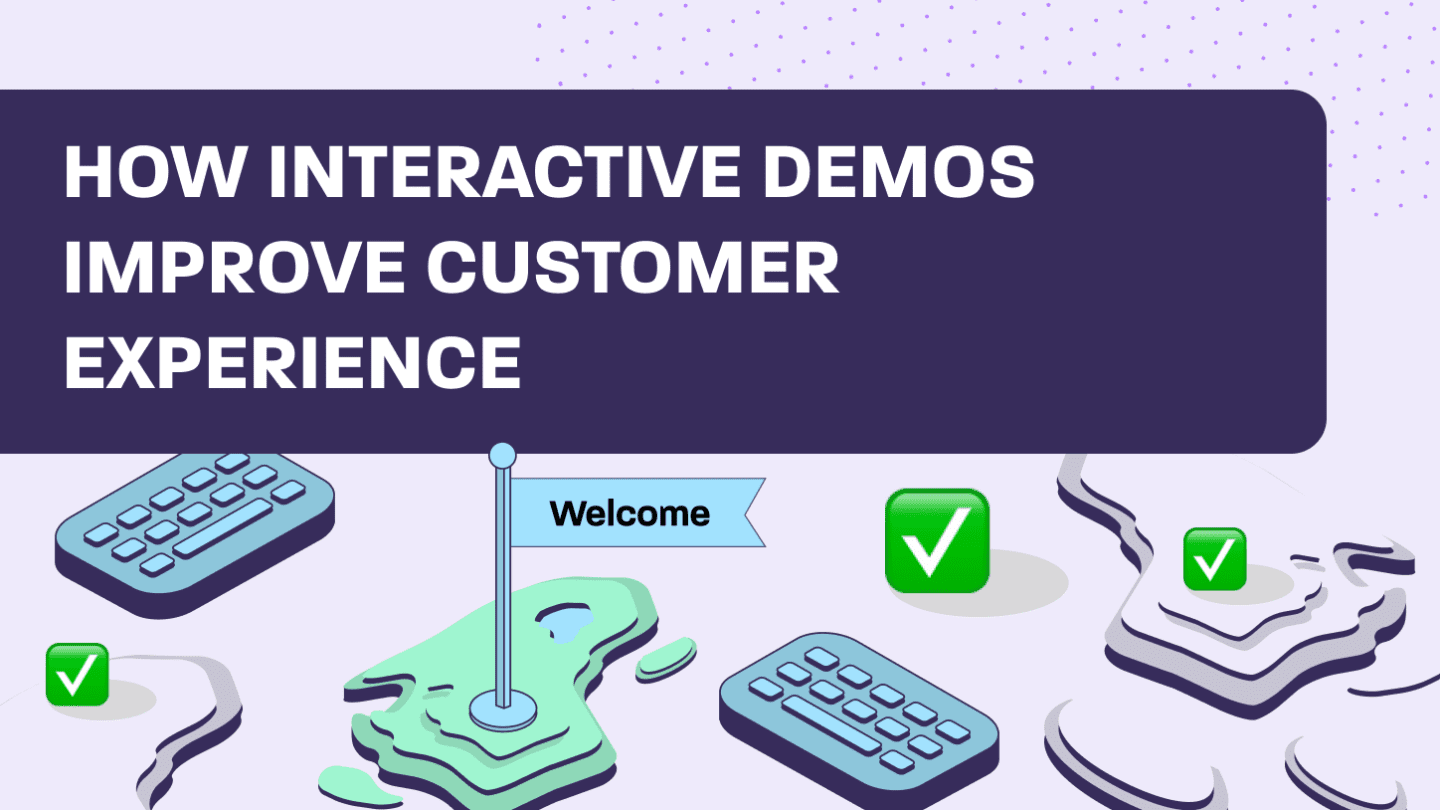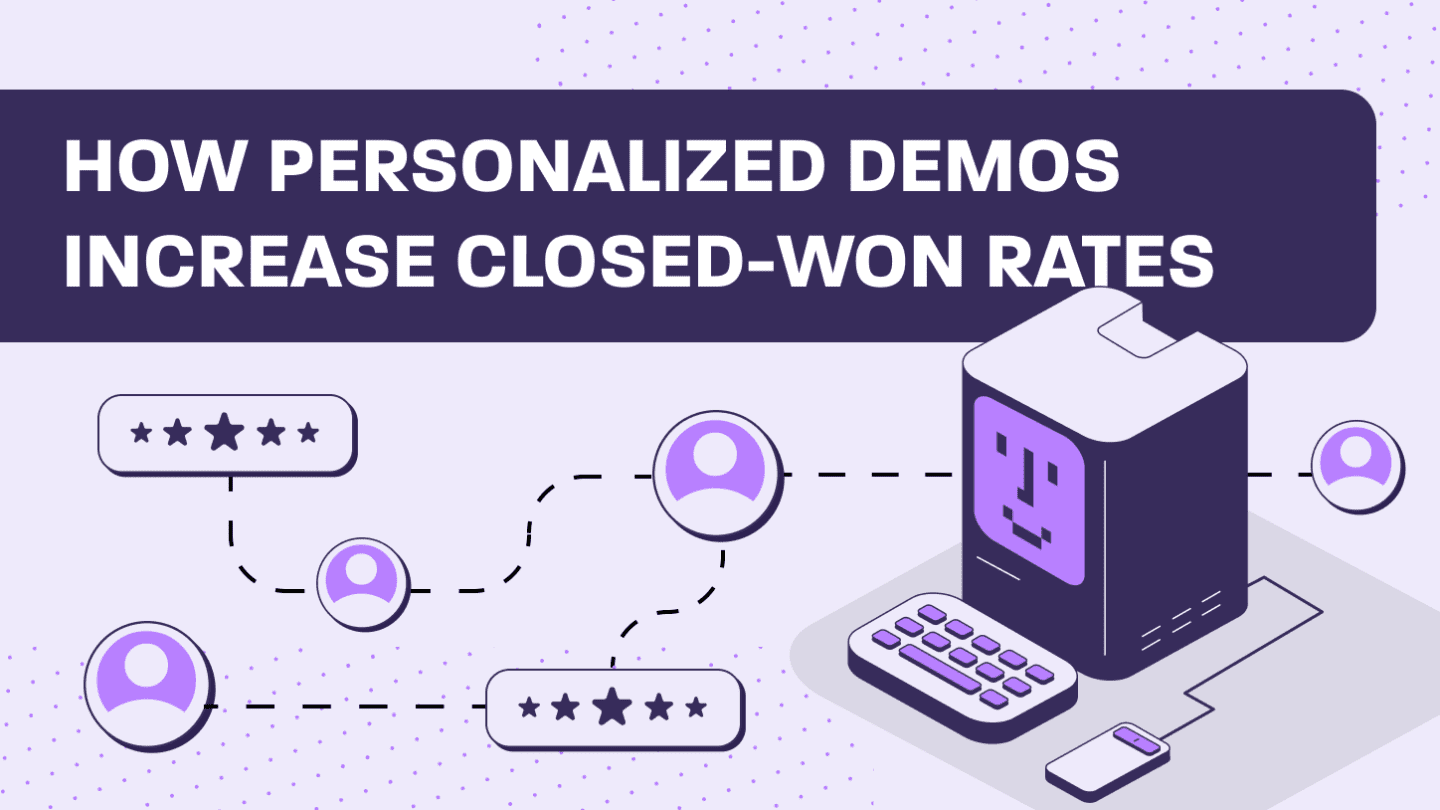Updated on May 23, 2024.
Welcome!
Let us give you a quick tour of our blog about product tours.
This section will hopefully grab your attention and encourage you to keep reading on.
You’re going to find a short introduction about the general uses and importance of an interactive product tour. This will include discussing the many needs for a product tour when teaching customers, prospects, or new employees about your product so they can utilize it to its fullest.
In the following paragraphs, you’ll learn the definition of a product tour, why your product needs a product tour, how to make a product tour, 7 expert tips to create a product walkthrough that converts, examples of expert product tours, and much, much more!
Thanks for coming on our blog tour about product tours! We’ll leave you here to keep scrolling on your own.
Enjoy!
What is a product tour or walkthrough?
Somewhat like the tour that we attempted to give above, a product tour (or a product walkthrough) is a guided interactive demo that can help you understand a SaaS product.
Product tours showcase how a digital product works, its benefits, and how to use it. It takes the user step-by-step through the product, teaching them how to utilize all of its features.
Ideally, the tour or walkthrough should be clear and concise so that the user can quickly and easily understand the product’s flow and value.
What is an interactive product tour?
Now, let’s talk about interactive product tours.
An interactive product tour will also guide users through the software while allowing them to interact directly with the product as well. Instead of merely receiving a video tour of the software, an interactive product tour gives users the experience of actually clicking through it by themselves.
You can learn more about building product tours, including expert tips and examples, in our complete guide to product tours.
7 reasons why your product needs a product tour
You may be thinking: “What do I possibly stand to gain from a product tour?”
Well, it just so happens that creating a product tour or walkthrough can be useful in many different ways and various industries.
Here are a few ideas off the top of our head.
1. Use product-led growth in your marketing
One way you can utilize your product tour is to drive your product-led growth marketing strategy.
Give prospects the option to try your product themselves, understand the value it can bring them, and then decide to buy it.
You can also embed your product tour on your website or in your marketing materials to help you walk your site visitors or leads through the features that can be useful to them. This way, they’ll quickly fall in love with your product.
You can learn exactly what to include in your tours and demos by checking out The Ultimate Product Demo Checklist for SaaS Companies:

2. Improve lead qualification
There’s a lot to love about interactive product tours.
But one of the best things about them is that they give prospects the ability to see what your product can do earlier in the sales process. And this means that buyers will already have a better understanding of your product’s value before you even meet with them. WHICH can help you speed up your sales process and boost conversions.
It goes beyond that though. Because there is this earlier understanding of the product’s value, the buyers that meet with your sales team will likely have higher intent.
Plus, if you use a demo platform (like Walnut), you’ll be able to track how prospects interact with your product tours, which can help with lead qualification as well as guide you when it comes to what to focus on during your sales calls.
3. Boost SEO
When you embed an interactive product tour on your website, you’re adding an extra element that can grab prospects’ attention and keep them on your site.
And this can have a major impact on SEO.
Why? Because the higher the dwell time, or the amount of time users spend on your site before going back to the search results, the more likely Google is to consider your company an authority on the subject matter and rank your page higher.
4. Ensure your customers’ success
Don’t you want your customers to be successful? That’s a silly question. Of course you do!
Well, a guided product tour can be the key to optimizing your customer onboarding process and helping your customers get the most out of your product. Use your walkthrough to take them on a step-by-step journey around the software so that they can learn how to maximize their product experience.
Spare them the pain of having to google “how to” guides and fumbling through the product by themselves, which can waste a lot of their time.
On top of this, product tours can remove the annoyance of them having to submit countless support requests, which can waste a lot of your team’s time.
After all, their success is your success. So the more they understand all the benefits of your product’s features, the more they can use it to improve their lives. And the more they improve their lives, the more they won’t want to stop using it—giving you a long-term, happy customer.
5. Speed up employee onboarding
Want your new employees to jump right in and start making an impact?
(I’m assuming you didn’t answer “no”.)
Then you need to follow the customer onboarding best practices. In fact, research by SHRM found that a good onboarding process is a key aspect to retaining employees.
An important step to a successful onboarding experience is getting new employees acquainted with your product. And doing it fast.
So, it’s a good idea to give them an automated product tour that’ll show them exactly how to use your software. Just remember to keep it engaging so that they stick around long enough to understand the product and can remember how it works.
6. Showcase new or unused features
Your R&D team spent hours rolling out amazing features and capabilities. But how can you get your users to enjoy them all?
(If you don’t know the answer by now, we think you may need to make yourself a coffee.)
A product tour, of course!
An interactive tour is far more interesting and engaging than an email or blog and will ensure that more people utilize the new features.
That’s why they’re the ideal tool to walk users through all the new rollouts so that they can begin using them immediately. You can also use them to get users acquainted with parts of the product that they aren’t yet using but that can positively impact their experience.
7. Upsell your premium features
If you have users that are already in love with your product, now can be a good time to encourage them to try your premium tools.
And a product tour can be a compelling way to drive upselling and cross-selling opportunities.
Create a product tour to walk engaged users through the many tools and features they aren’t paying for yet. Just make sure you’re targeting the right people by basing it on your internal analytics and usage metrics.
Top 5 qualities for effective product tours
Let us give you a brief unsolicited history lesson: When Microsoft rolled out Office 97, users met Clippy. You may remember this annoying paperclip, who would tap on your screen and offer you really unhelpful advice whenever you needed it the least.
While he was intended to be a helpful tool to guide users through the software, most users hated him because his advice was often too basic, he popped up at seemingly random times, and interrupted users with their main tasks.
He was eventually removed from Office XP in 2001.
So what’s clear from Clippy is that product tours can go very wrong.

In order to avoid a product tour that’s as annoying as Clippy was, make sure your product tour has the following 5 qualities:
1. Easy to use
If your product tour isn’t super intuitive and easy to follow, you may need to create a product tour to walk people through your product tour. And then, if that’s not clear, you may need to create a product tour about your product tour that shows your product tour.
And then—
Ok, you get our point. The whole point of the product tour is to simplify things, not to make them more complicated (like we just did).
Use your product walkthrough to show your users exactly how to use the product – where to click, what it affects, how to move from stage to stage, and more.
2. Well structured
“Where am I going and how am I getting there?”
Don’t make your users ask this question.
Create a clear structure for the tour that lets users smoothly and intuitively navigate through it. This is especially important if you’re trying to show many different tools within the same walkthrough.
Remember, you need to make sure your users understand what they’re learning, what they’re trying to accomplish, and what they stand to gain.
3. Not too dense
We know your product is fascinating and has many cool tools and gadgets and we love that for you.
But when it comes to a product tour, less is more.
If you start explaining and showing every small thing, your users are going to be overwhelmed with information and most likely bored to death. And no one wants that.
Keep your tour limited to the most important features that are vital to your product so that your users don’t ditch you halfway through and head over to the ice cream stand.
Or, break it up into a few separate product tours so that users can master different features or skills individually.
4. Engaging
Remember what we just talked about.
IF YOUR PRODUCT TOUR IS BORING, PROSPECTS WILL DITCH YOU AND GO TO THE ICE CREAM STAND.
A product tour can be the most boring thing in the world if you don’t put a little heart into it.
Have fun and create an engaging walkthrough that will delight your users.
While you may be inclined to think this is a “nice-to-have” quality but not essential, let us assure you: if your users enjoy the experience, they will stick around all the way through. And they can only truly learn what you’re teaching if they’re there to see it.
5. To the point
People have places to go and things to see.
Capture your users’ attention and quickly show them what they need to see.
So, you’ll need to remove all the unnecessary fluff and try to consolidate your steps as much as possible so that you don’t waste any of your users’ precious time.
10 tips for creating product tours that convert
Product tours are a great way to improve your marketing, boost your sales, customer onboarding, or employee success—but only if they’re done right.
Here are a few tips to help you make sure your product tours convert.
1. Make it interactive
Spare your users from reading long explanatory articles, kind of like this one.
(Well, we hope this one is at least a bit more interesting than the average how-to guide.)
Anyways, you don’t want to show them a video or let them get away with just clicking next, next, next, next, finish.
If you do that, your prospect will do this:

Instead, use a demo platform (like Walnut) that gives users an interactive experience where they can try the new product or new features for themselves as they explore them.
In fact, wouldn’t this whole blog be a lot more exciting if it wasn’t a blog at all, but an interactive experience?
We know we’d be having more fun.
2. Personalize it
Nothing attracts our attention more than our very own name.
And a product tour that is personalized just for us is something that’ll deeply impact our likelihood to engage.
This is especially true when it comes to the sales industry, where customers expect a certain amount of personalization. According to a study by Segment, 71% of consumers express some level of frustration when their shopping experience is impersonal.
So, try not to piss off your prospects by giving them an impersonal buying experience. Instead, use a platform (like Walnut) that lets you easily create demos and personalize your product tours.
3. Tell a story
Never underestimate the power of a good story.
When you structure your tour like a story with a clear beginning, middle, and end, it makes it easy for prospects to follow along. This allows you to ensure that your narrative doesn’t confuse buyers or make them feel lost.
Plus, listening to a compelling story is much more engaging than hearing a generic pitch.
4. Make sure the messaging is clear
One of the biggest product tour mistakes you can make is overcomplicating the messaging.
To avoid overwhelming buyers and limit confusion, focus on only the one or two features that are most relevant for their specific needs.
On top of this, save the most important information for the start to get them hooked from the get-go. This also helps buyers understand the most important features for their needs, without them getting confused by other things.
5. Lead with value
Users want to understand right off the bat how your product will enhance their lives.
So when you’re explaining your product, make sure it’s clear from the outset of the journey what the user stands to gain in terms of value.
When crafting the perfect product tour, ask yourself at every move: Is this helping my users understand the value of my product or feature? Will they understand it quickly or do they need to go through a few steps until they get it?
To this point, make sure your product tour covers all the ways your product can offer value. This includes the ways your product can be integrated with other software and fit in smoothly with the prospects’ workflow.
6. Don’t be boring
Consider the difference between these two product tour openers:

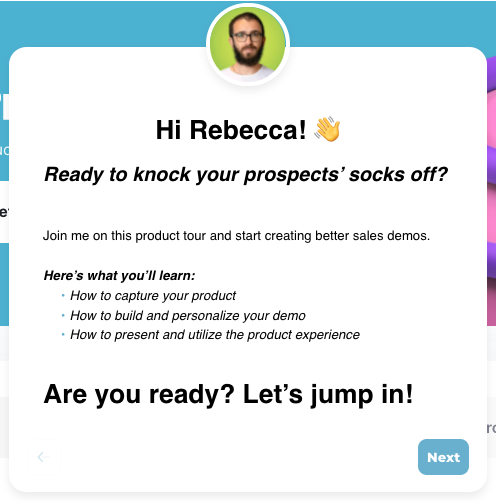
Use your product tour to inspire excitement in your users.
If you create your product tour on a platform (like Walnut), you’ll be able to personalize your guides, and play with the formatting to keep your users engaged.
7. Add gifs, photos, and videos
It’s not just that your product tour can’t be boring. It also needs to stand out.
Spice up your product tour’s guide with engaging media. One idea is to include an intro video of yourself welcoming your users to the tour or a funny gif to put a smile on their faces.
Utilize the tools available to you (on a platform like Walnut) to maximize the experience for your users.
Because a more interesting and fun experience will leave users wanting to click through, ensuring higher engagement and better conversion rates.
8. Include a hovering CTA button
Do whatever you can to capitalize on this tour.
And that means keeping your users’ eyes on the prize with a hovering CTA button that leads them to the next step in your process.
Depending on your use of the product tour, this button could encourage users to “Try Out Our New Feature” or “Request a Demo” or “Integrate Our Software”.
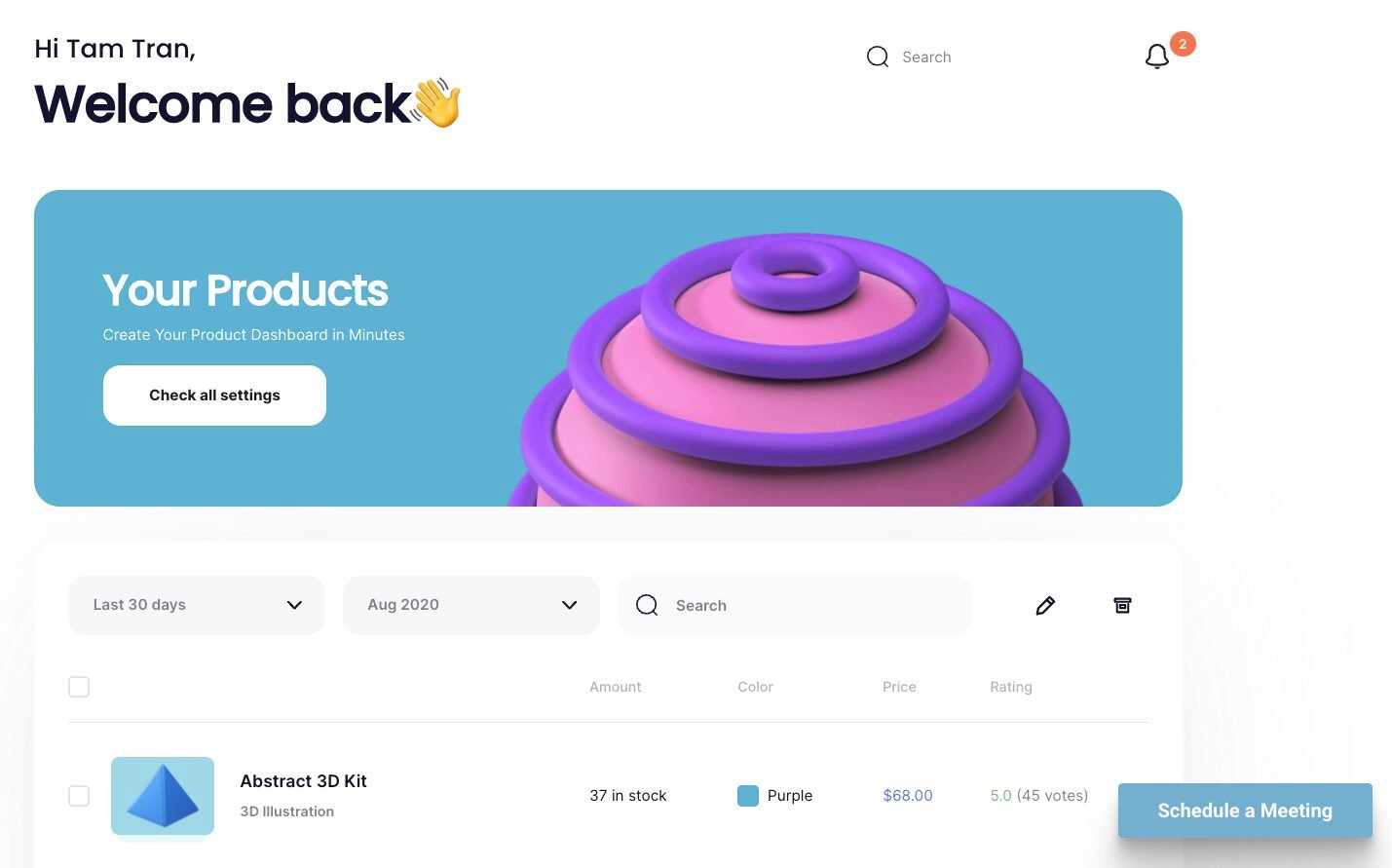
If you’re creating your product tour on Walnut, you can include this on every screen or only at the end of the tour so your users know what to do next.
9. Easily splice guides to solve specific issues
Sometimes you’ll have new customers who need help with specific parts of the client onboarding process or prospects who are interested only in certain features in your product.
Instead of bombarding them with information that isn’t relevant to them, quickly chop up your tutorial to feature only the parts that matter.
This can be done easily (using a platform like Walnut) and can make your product walkthrough more engaging and boost conversions.
10. Gather data to optimize your product tour
There’s always room for improvement when it comes to your product tour.
You should constantly monitor how buyers use your product tour to gain insights and feedback regarding their specific pain points, potential areas of confusion, and drop points.
With this information, you can tweak your tour to perfect the messaging and user experience.
How interactive product tours can help your B2B sales process
Being able to create interactive product tours for your SaaS product is crucial when it comes to B2B sales.
Here are a few reasons why:
1. You can use them throughout the sales funnel
Being able to create interactive product tours is a tool you can use to enhance every stage of your sales funnel.
Let’s start at the beginning. Use an in-depth product tour on your website and in your marketing materials to gather leads and give them the chance to truly understand how your product works.
Next, let your sales team create short, interactive product tours or sales demos that can be utilized as early as in their discovery calls, or can be sent to prospects in their demo follow-up email. Then they can create more complex and personalized product tours to be used in their demo calls.
You can also optimize your presales process by allowing your solution engineers to create product demo templates that can be personalized for each prospect by the sales reps. One way to do this is by using presales tools.
And finally, once the sale is complete, have your customer success team send interactive product tours to your customers to help guide them through the onboarding stage. This way, they’ll quickly become masters in employing all the specific tools and features your product offers and fall in love.
2. They’ll make your B2B sales funnel more engaging
There’s one thing that B2B is not known for, and that’s being interesting. And this applies to all aspects of the SaaS sales process, including marketing, sales, and buying.
Because of this commonly held belief, more often than not, B2B brands bend over backwards trying to force the idea that they are not just a cluster of hyper specific tools and features—they are truly innovative and exciting.
But the best way to do this is not just by throwing in a few jokes into your otherwise vanilla messaging, it’s by crafting useful stories and valuable content that buyers can use to understand your product and what they stand to gain from purchasing it.
This is where your interactive product tour comes in.
Create prospect-focused walkthroughs that showcase unique areas where buyers can gain value. Let buyers interact with the product for themselves to see how their life can be impacted by it. Instead of talking about your product, let them experience it in action.
A more engaging product tour will automatically increase interest and give your users more enjoyment of your product.
3. They’ll allow you to utilize PLG
Here’s a stat from Forrester that sums up one of the current issues with B2B sales:
“Three to one, B2B buyers want to self-educate rather than talk to sales representatives to learn about products and services.”
During the last few years, the sales industry has changed significantly when it comes to B2C, yet B2B sales are by and large lagging behind.
Whereas buyers still want to talk with sales reps to close deals, a lot of their research now is done by themselves and on their own. Therefore, it is your job to provide them with the information they need so that they can do their own research and feel confident that you are offering the best product for them.
Take note of software like Slack, Calendly, and Dropbox. These companies found success because they let buyers use the product for free before they needed to start paying. Using this product-led growth approach gives your prospects the chance to understand the value of your product for themselves. Because once the prospect becomes dependent on the product and experiences the value it brings them, they then will make the easy decision of starting to pay for it.
A great way for any SaaS company to use a PLG approach, regardless of your business model, is to create interactive product tours. Send them a link to try the product on their own and understand what it can do for them.
4. They’re a far better option than slide decks
Slide decks are the SaaS sales technology of the early 00s—or at least they should be. While they were innovative and interesting for a while, they are no longer useful.
In fact, Gong found that when sales reps used slide decks during their discovery calls, they were 17% less likely to book a follow-up meeting.
When you stop to think about this stat, it shouldn’t be all too surprising. Consider yourself as the buyer. You’re sitting on a call where the seller is focusing on a slide deck and taking you through all the areas he or she wants to talk about without really focusing on you or your needs. How likely would you be to agree to sit through another meeting like that?
However, at the same time, the average B2B sale has 6.8 buyers involved. With that many people to impress, sales reps need a way to pass the message from your champion to all the other decision-makers without it getting lost or confused along the way.
This is where your interactive product tours come in. You can use them to send to your champion after your discovery call so that they can try the product for themselves and see what all the fuss is about. You can create a tour that is focused on specific tools your prospect needs and is interested in. They can then send this to the other decision-makers to get everyone excited about the opportunity.
5. They allow for more personalization
In 2022, personalization is no longer a nice-to-have feature. It’s necessary. Throughout the sales funnel, the more personalized the experience, the better the results.
When it comes to marketing, customers expect a certain level of personalization. Some 80% of consumers say they’re more likely to buy when the buying process is personalized. That means, instead of reaching out to leads with a generic email, include a personalized product tour that fits their industry needs.
In sales, personalization can be even more crucial. LinkedIn found that 90% of C-suite executives said they would not respond to a sales approach that wasn’t personalized. That means that unless you are making an effort to really learn about your prospects and showcase how your product can solve their issues, you won’t make an impact on them.
And lastly, once the purchase is complete, customers still want to receive a personalized experience. 65% of customers say that personalization impacts their decision to be loyal to a specific brand. Personalize your product tours to walk your B2B customers through your product, guiding them on how to utilize it to the max for their specific needs.
By creating personalized and interactive product tours for your customers, you can optimize their whole sales experience. This will lead to better leads, more sales, and loyal customers.
6. You can use them to showcase new features
Even once your customers are happily using your product, your interactive product tours should still be put to use.
You can create interactive product tours to showcase any new features or updates and train your users on how to use them successfully. Because, as your product managers will tell you, there’s nothing more annoying than working hard on a cool feature that can be extremely useful, but then it never gets seen or used.
Not only will this result in wasted resources, but it’ll also impact your customers’ satisfaction with your product, brand loyalty, and referrals. To gauge how happy your customers are, you can send customer satisfaction score (CSAT) surveys.
Plus, if your product has a multiple-tier purchasing plan, you can use interactive product tours to upsell more advanced features to specific customers.
7. They give you more data
There’s nothing as important to improving your current sales system as analytics and data.
Regardless of how you decide to utilize your interactive product tours throughout the B2B sales process, it is extremely beneficial to be able to keep track of how your customers use them.
For example, follow up on your marketing leads and understand their interests by seeing how far they went in your product tour or how many times they clicked through. You can also learn about the specific areas they clicked on that drew their interest.
Track the way your sales prospects share your product tours and who they share them with. Gauge how interested this customer is in your product and gather the information necessary so that you can build a better product tour next time.
You can also use the data for your customer success teams to learn more about how your customers handle new rollouts and how they utilize the product tours to enrich their experience of your product.
How do I create a product tour?
Great freakin’ question.
The fastest and easiest way to create a product tour is with no code interactive demo software like Walnut. Here’s how it works:
Step 1: Capture your product’s screens
In order for your demo to bring the most value, you need to showcase the aspects of your product that will solve buyers’ pain points.
So, the first step is to capture your software’s screens with Walnut’s browser extension. And that’s it!
Easy as 1, 2, 3.
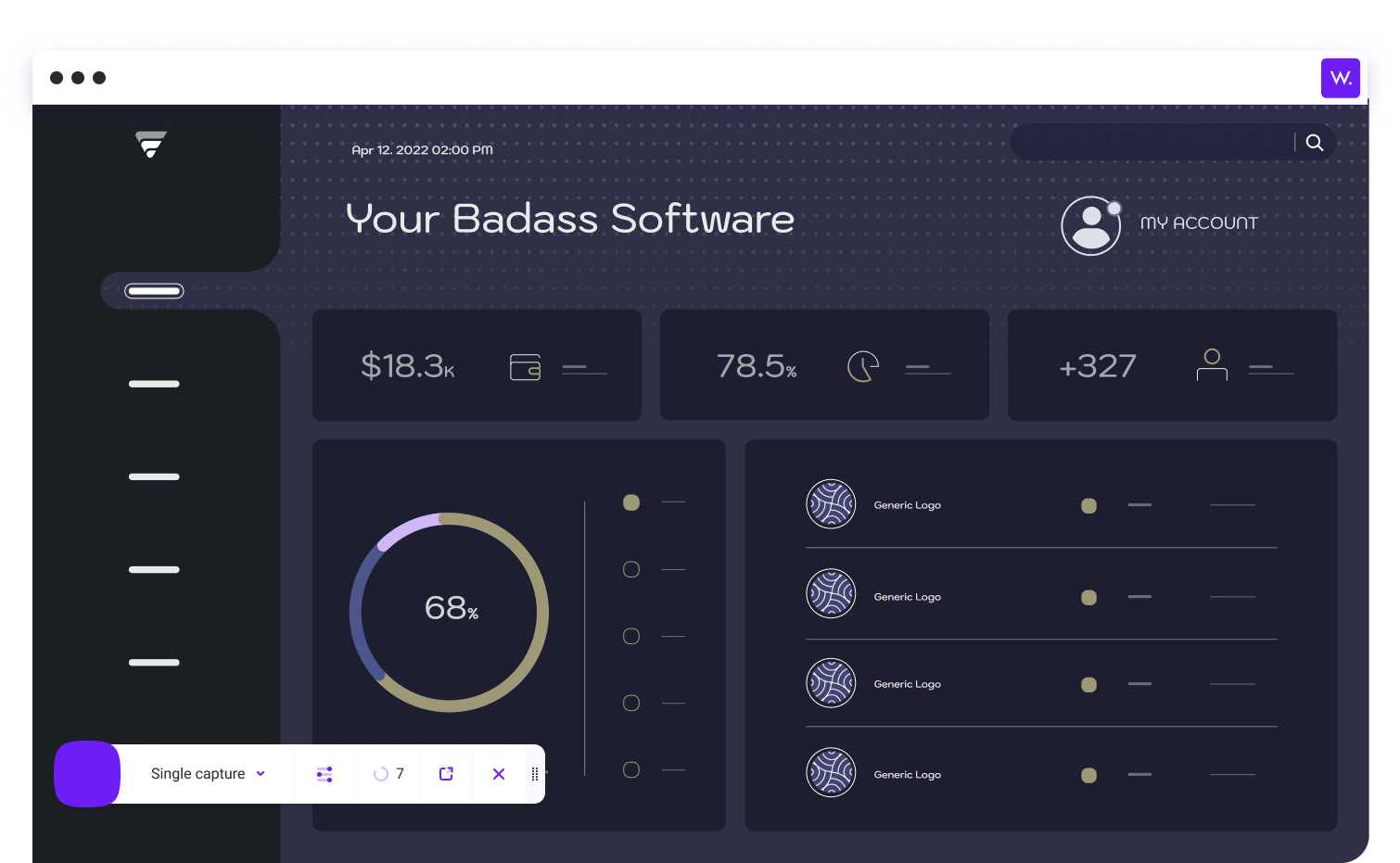
Step 2: Personalize your interactive product tour for your prospect
Next, you’ll need to personalize your product tour for your prospect.
Luckily, with Walnut, you can customize every aspect of your demo, including logos, data, buttons, text, features, and more—no code necessary.
How? Just go to the Walnut Editor and click on whichever element you want to personalize. You can personalize text, images, HTML code, or even hide elements.
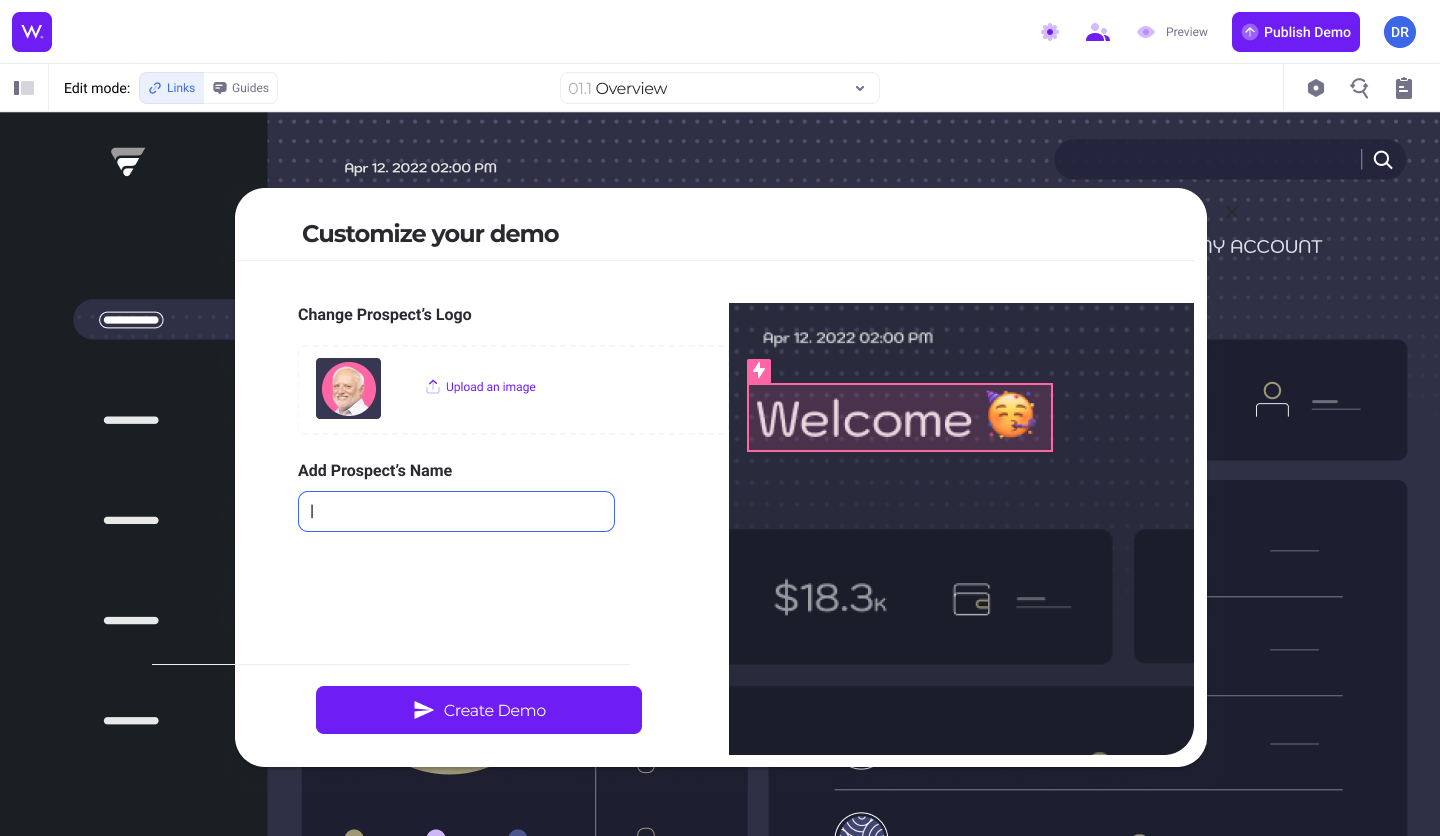
Step 3: Put some guides in
Now, you’ll need to add some guides to help your customers get the lay of the land.
By adding guides, you’ll be better able to create the ideal path for your users to follow to make sure they can get the most out of your product.
This will enable your prospects to navigate your product on their own at any stage of the sales process.
So, how do you do this? Well, you’ll want to start by selecting the part of your demo you want to add your guides to, select the Annotation Icon, draft what your guide will say, and hit the “Save” button.
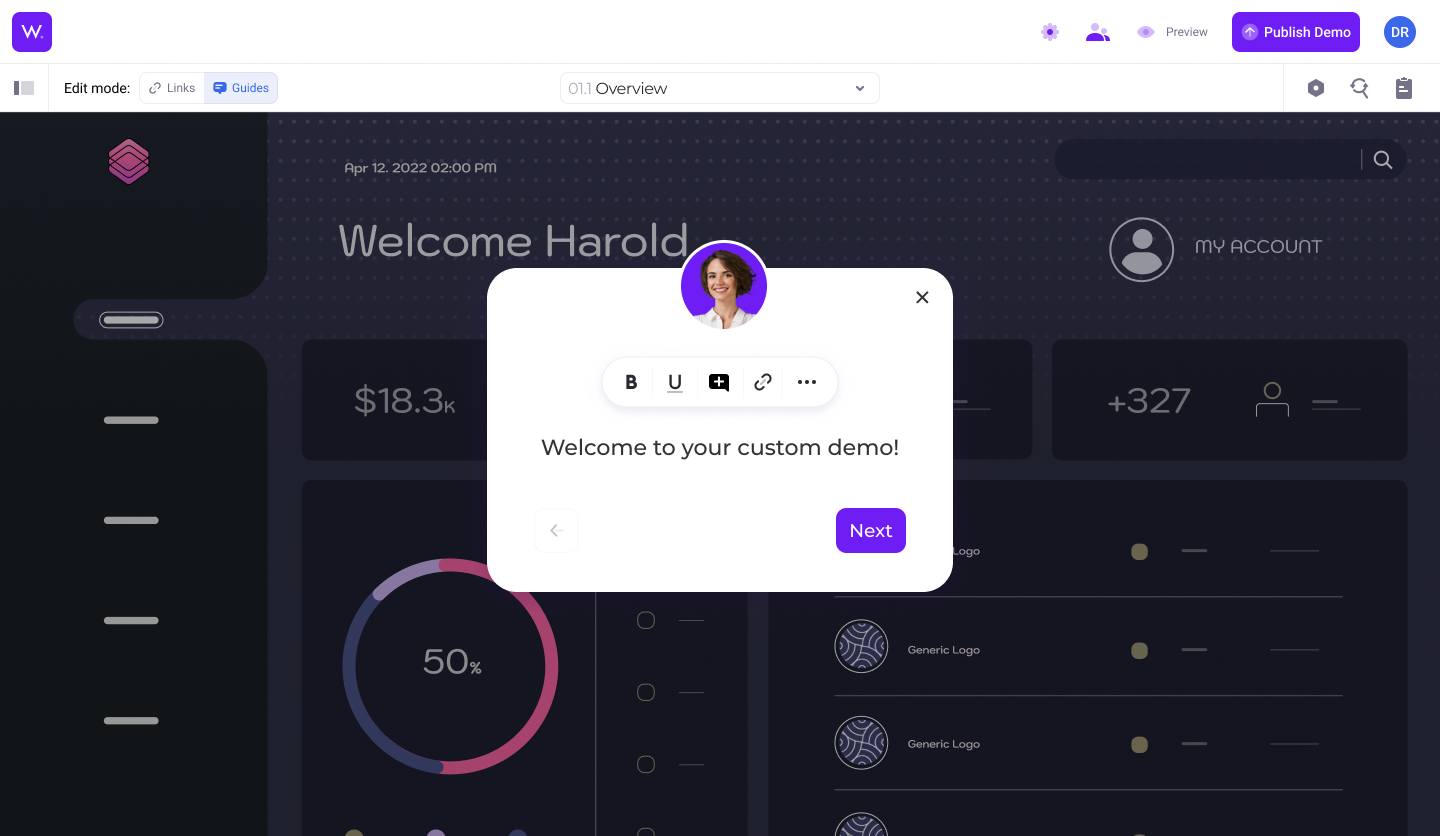
Step 4: Share your product tours
You’ve just created a killer product tour. Right on!
Now, it’s time to send that bad boy out into the world!
It’s a good idea to send your interactive product tour to your user so they can try out the product on their own time. Or you can embed your product tour on your website so everyone can try.
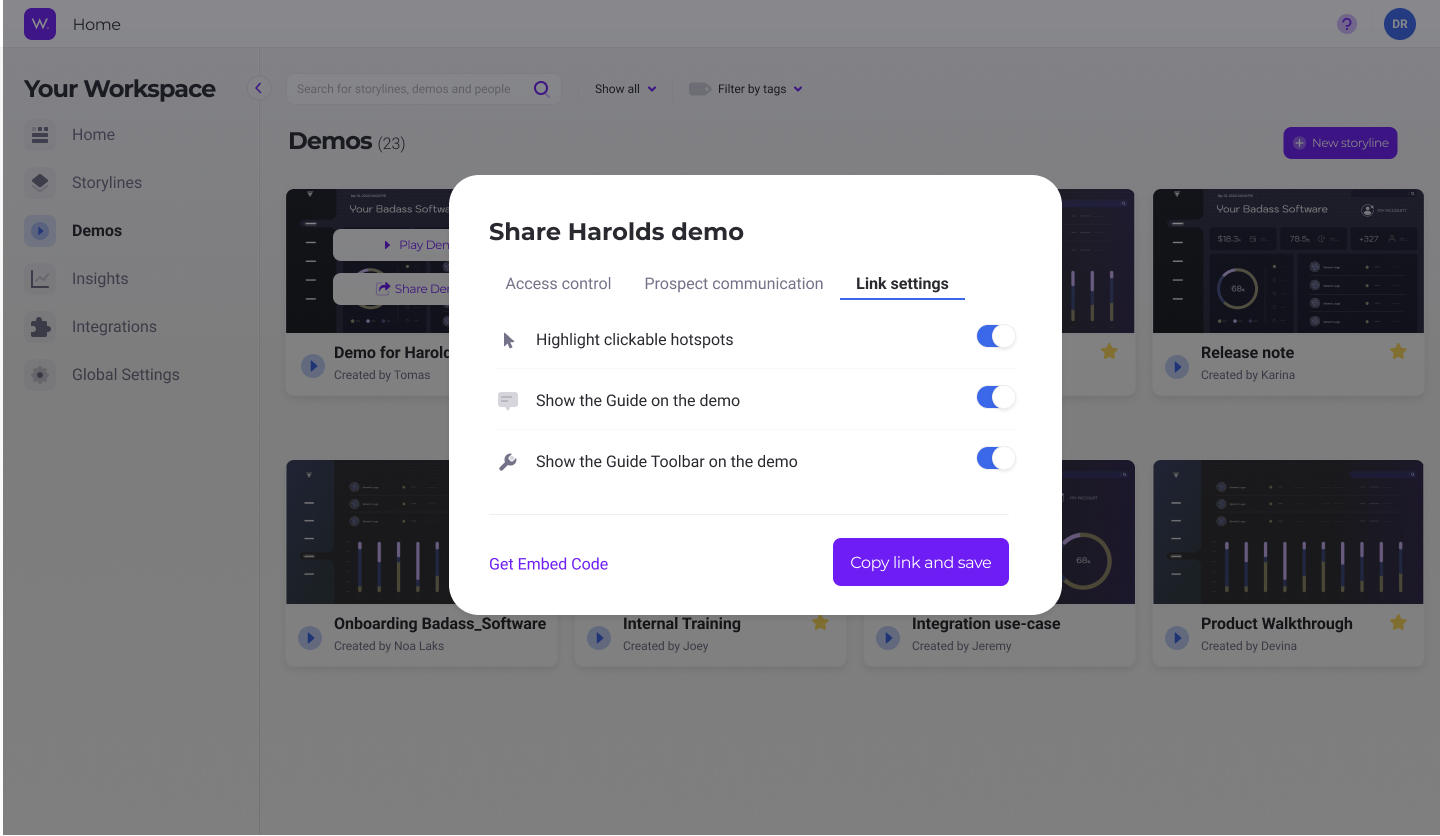
Step 5: Analyze your product tours
Even after you’ve sent your demo, there’s still plenty more to do.
When you use a demo platform (like Walnut), you can track how users interacted with your product tour and which product tours were the highest converting.
This will give you valuable insights that you can use to fine tune your product tours going forward.
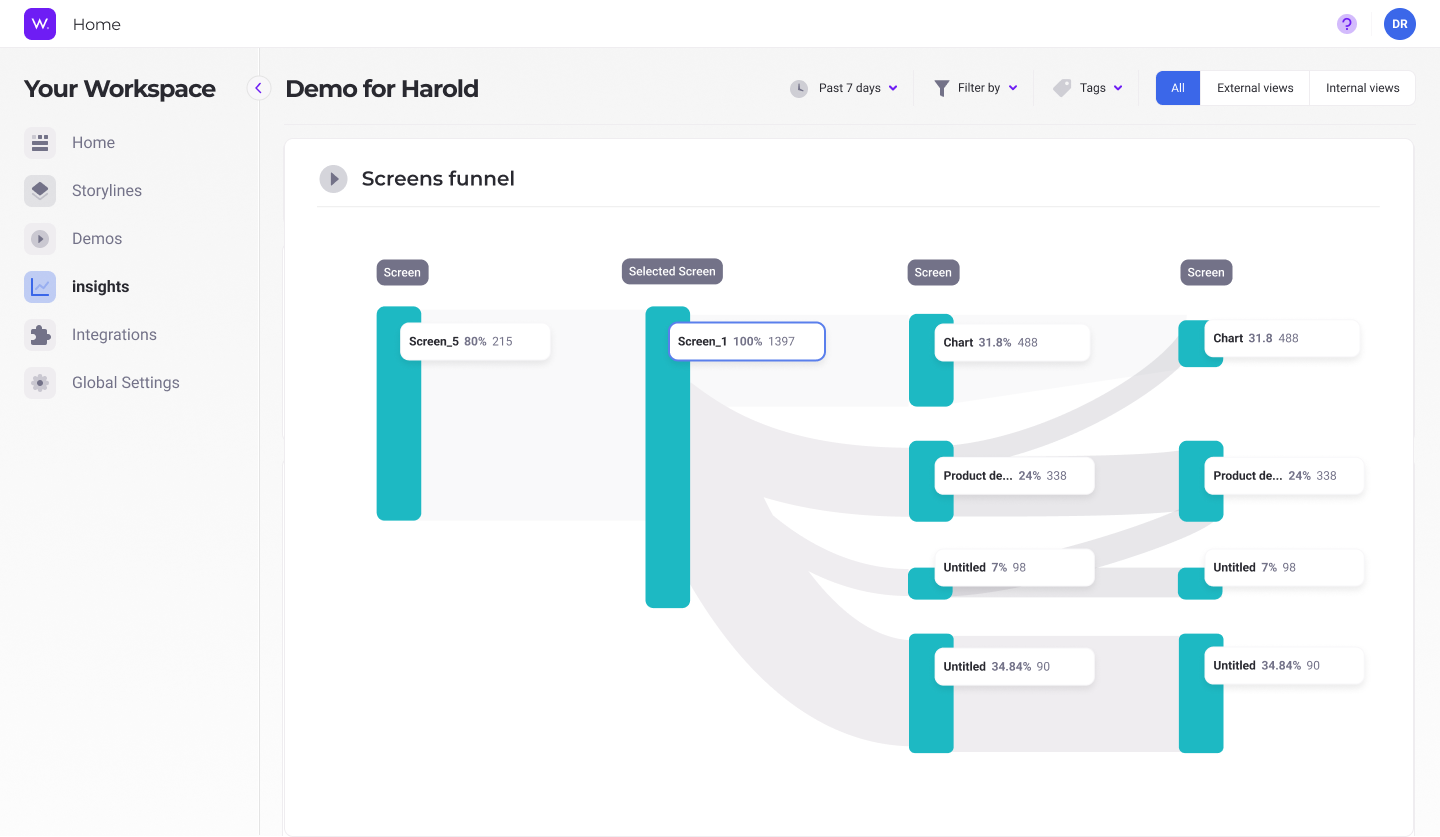
Example of an expert product tour for inspiration
SimpleLegal’s precise walkthrough
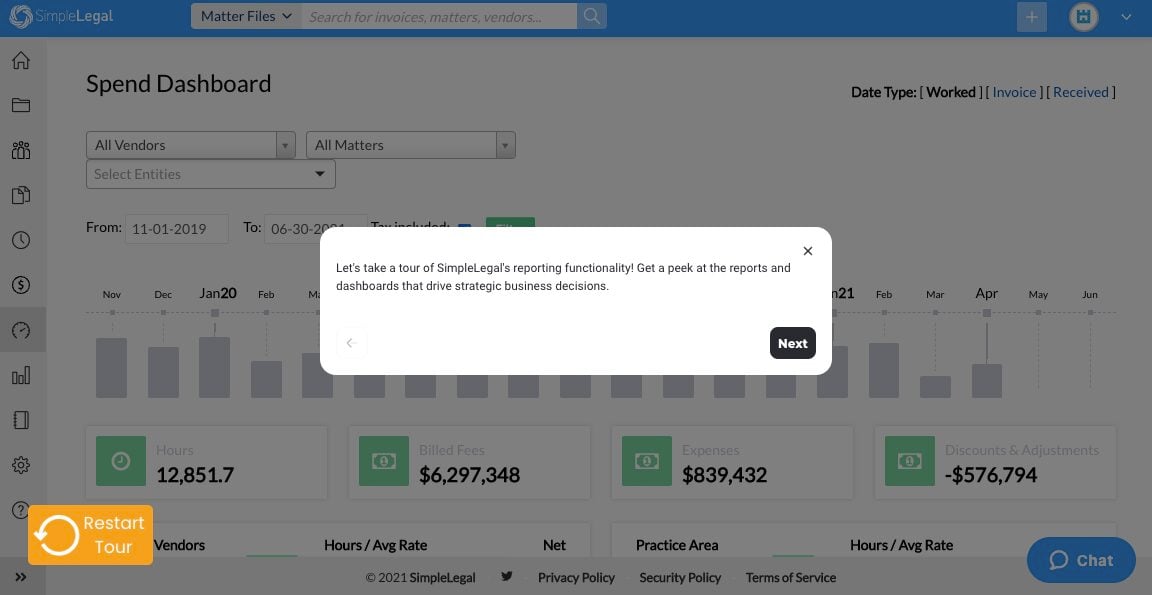
When it comes to a product that deals with topics that are as sensitive as legal operations, it’s crucial to not accidentally leak any customer information during your product tours or demos. SimpleLegal used Walnut’s completely safe sales demo environment to make sure the experience was secure.
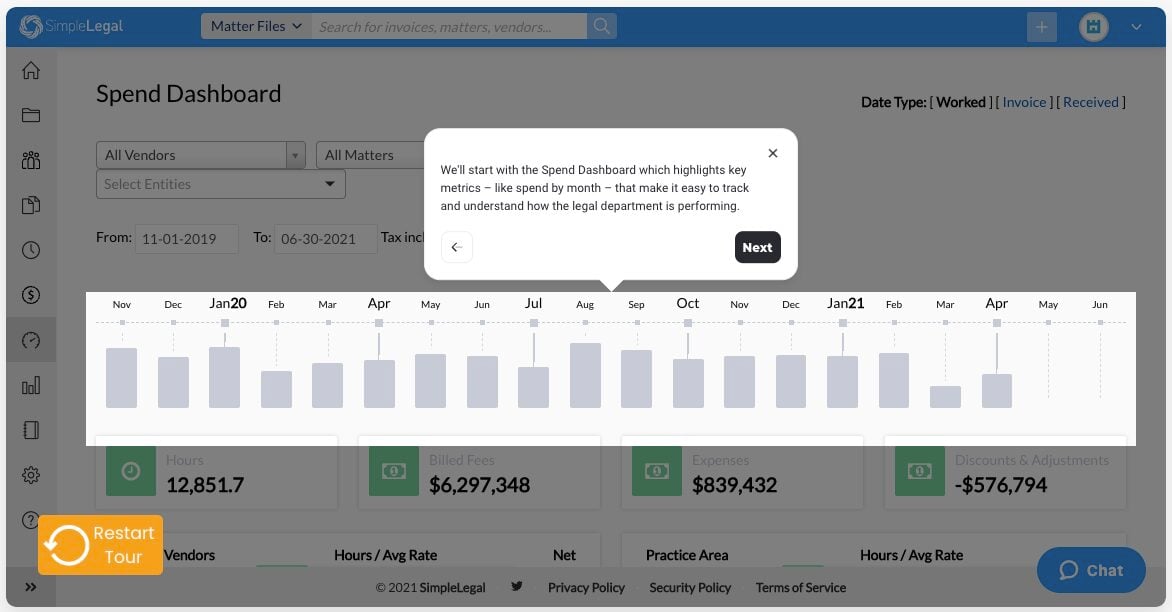
Check out how the product tour automatically dims the rest of the screen to center the users’ attention specifically on the feature they are exploring. They then add an annotation that clearly explains what the user is looking at.
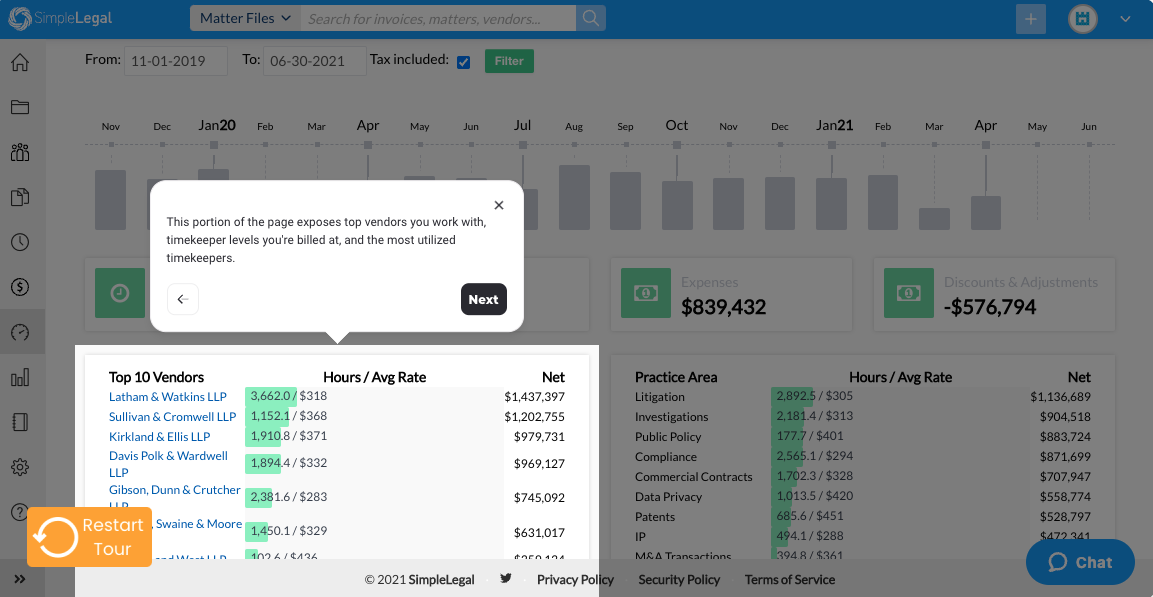
The guide also takes the users step-by-step through the different sets of data you can track on their platform, explaining what each of them is and why it’s important.
If you want to see more, check out their full product tour here.
Walk users through your product (and walk your product into their hearts)
With the right product tour, your users will learn how to utilize your product and fall in love with its features.
Whether you’re using a product tour to optimize your customer success management, utilize the product-led growth trends, or boost your marketing materials, a product tour can be what you need to take your business to the next stage.
But creating a product tour can be difficult, time-consuming, and costly.
Well, at least they used to be. With a platform (LIKE WALNUT), creating a product tour is, as they say, “easy peasy lemon squeezy.”
(Seriously what is the deal with that saying?)
Anyways, the bottom line is that offering interactive product tours will not only give your marketing, sales, and customer success teams an edge, but it will also make the buying experience much more engaging for prospects.
FAQs
1. How many steps should be included in a product tour?
Your prospects are busy people.
This means you’ll want to keep your product tours short and straight to the point.
And while there isn’t an exact answer for how many steps you should have in your product tour, you’ll need to include enough to show how prospects can use the product and what the value is.
2. What is the purpose of a product tour?
When done right, product tours should help your users get to know your product and its main features. They should also be used to convey your product’s unique value proposition.
Still not using Walnut? That’s a tragedy! Well, this story can still have a happy ending if you click the “Get Started” button at the top of your screen.

